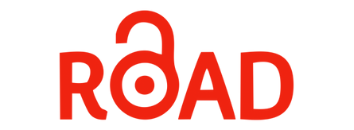Value Added: Technique for Corporate Performance Measurement under Social Perspective
DOI:
https://doi.org/10.24002/kinerja.v21i1.1038Abstract
Financial Analysts consider as profit the most important measure of business performance. Profit may be expressed in terms of money value and measured as sales margin percentage or be calculated as return of investment. These, in any form, are used as basis for measure of business performance. In recent years, considerable interest have been shown in the use of value added as an alternative or additional approach to measure the operational efficiency and profitability of a business. A lot of discussion have been going on about reporting the performance of an organization in terms of value added rather than conventional profit or loss. The information disclosed by the Statement of Value Added, based on Value Added Accounting and reporting is considered to be much more useful than that disclosed by the conventional profit and loss account in providing a realistic basis for measuring the economic performance of an organization. The concept has received great attention in accounting practices with the emergence of large corporations having significant bearing on the society and finally on the economy for multi-dimensional impact over and above the owners. Value added system is a very useful measure of judging the performance of an enterprise for managerial decision-making and for inter-firm comparison.
Keywords: Value Added; Value Added Accounting and Reporting, Value Added Statement, Annual Report.
References
Badhani, K.N., and Saxena, R.M., 1989, Corporate Report – Social Accounting in Public Enterprises of India, III Progress Report, Unpublished, Nainital, Kumaun University, pp. 30.
Bag, B. H., and Bao, D. H. 1996. The time series behavior and predictive‐ability results of annual value added data. Journal of Business Finance & Accounting, 23(3), pp. 449-460.
Bannister, J. W., and Riahi‐Belkaoui, A. 1991. Value added and corporate control in the US. Journal of International Financial Management & Accounting, 3(3), pp. 241-257.
Bhattacharyya, S.K., 1991. Value Added Concept of Income: Rethinking Needed for Corporate Growth, New Delhi, The Journal of Chartered Secretary., pp.23 – 25.
Burchell, S., Clubb, C., and Hopwood, A. G. 1981. A message from Mars'-and other reminiscences from the past. Accountancy, October, pp. 96-100.
Burchell, S., Clubb, C., and Hopwood, A.G. 1985. Accounting in its social context: towards a history of value added in the United Kingdom. Accounting, organizations and Society, 10(4), pp.381-413.
Brooman, F. S., and Jacoby, H. D. 1970. Macroeconomics: an introduction to theory and policy. Aldine Pub. Co.
Burritt, R. L., and Clarke, F. 1984. What are the prospects for corporate value added statements in Australia. The Chartered Accountant in Australia, pp.36-39.
Catturi G., 2003. The Universal Business Entity, The Idea, The Morphology and the physiology, Cedam, Padova.
Chander, Subhas., 1989 – Corporate Reporting: Disclosure of Value Added Statement, Delhi, The Indian Management, September., pp.22.
Deegan, C. 2013. Financial accounting theory. McGraw-Hill Education Australia.
Freeman, R. E. 2010. Strategic management: A stakeholder approach. Cambridge University Press.
Ganesan, K.P., 1994. A Study of Value Added Trends in Textile Mills in Tamil Nadu, Ph.D. Thesis, Madurai Kamraj University, February.
Gillchrist, R. R. 1970. Company appraisal and control by added value analysis. Certified Accountants Journal, pp. 573-580.
Gray, S. J., and Maunders, K. T. 1980. Value Added Reporting: Uses and Measurement: a Research Study. London,, UK: Association of Certified Accountants.
Gray, R., Kouhy, R., and Lavers, S. 1995. Corporate social and environmental reporting: a review of the literature and a longitudinal study of UK disclosure. Accounting, Auditing & Accountability Journal, 8(2), pp.47-77.
Gray, R. O., & Owen, D. D. and Adams, C.1996. Accounting and accountability: Changes and challenges in corporate social and environmental reporting.
Karpik, P., and Riahi-Belkaoui, A. 1989. The relative relationship between systematic risk and value added variables. Journal of International Financial Management & Accounting, 1(3), pp. 259-276.
Lewis, P., and Pendril, D. 2004. Advanced Financial Accounting, 2nd Ed., London, Pitman Publishing Limited
Maddison, A. 2005. Measuring and interpreting world economic performance 1500–2001. Review of Income and Wealth, 51(1), pp. 1-35.
Meek, G. K., and Gray, S. J. 1988. The value added statement: an innovation for US companies. Accounting Horizons, 2(2), pp. 73.
Malgwi, C. A., and Purdy, D.E. 2009. A Study of the Financial Reporting Dichotomy of Managers' Perceived Usefulness of the Value Added Statement. Business and Society Review, 114(2), pp. 253-272.
Mathews, M. R., and Perera, M.H.B. 1996. Accounting theory & development. Nelson.
Mathews, M. R. 1997. Twenty-five years of social and environmental accounting research: is there a silver jubilee to celebrate?. Accounting, Auditing & Accountability Journal, 10(4), pp. 481-531.
Maunders, K. T. 1985. The Decisions Relevance of Value Added Reports, In Frontiers of International Accounting: An Anthology, (eds.), Frederick D. Choi and Gerhard G. Muellelr, Ann Arbor, Mich., UMI Research Press, pp. 225-245.
Moni, V.S. 1991. How to Add Value? New Delhi, The Management Accountant, December, pp. 967-968.
Morley, M. F. 1979. The value added statement in Britain. Accounting Review, pp.618-629.
Pavlik, E., and Riahi-Belkaoui, A., 1994. The effects of ownership structure on value added-based performance. Managerial Finance, 20(9), pp. 16-26.
Ponzanelli G., 1967. Metodologia Contabile, Parte seconda (Accounting Methodology Part II): Institute di Ragioneria, Universita di Siena.
Rahman, M. Z., 1990. The local value added statement: a reporting requirement for multinationals in developing host countries. International Journal of Accounting, 25(2), pp. 87-97.
Rao, N., 1991. Disclosure Practices of Value Added Statement in Public Enterprise, India. The Management Accountant, February, pp. 330-331.
Rispoli, M., 1983. The value added in controlling corporate strategy, Finanza Marketinge Produzione, n.4.
Riahi-Belkaoui, A., 1978. Financial ratios as predictors of Canadian takeovers. Journal of Business Finance & Accounting, 5(1), pp. 93-107.
Riahi-Belkaoui, A., and Picur, R.D., 1994. Explaining market returns: earnings versus value added data. Managerial Finance, 20(9), pp.44-55.
Riahi-Belkaoui, A. 1996. Performance results in value added reporting. Greenwood Publishing Group.
Rollier, J., 1978, Elimination of depreciation charge entirely at the time of calculating value added income. Accountancy, October.
Ruggles, R., and Ruggles, N.D., 1956. National income accounts and income analysis. New York, NY: McGraw-Hill.
Rutherford, B.A., 1980. Published statements of value added: A survey of three years' experience. Accounting and Business Research, 11(41), pp.15-28.
Shakuntalamoni. 1987. Trends in Added Value, M.Phil., Dissertation, Coimbatore., pp. 130
Sharma, K.K., and Agarwal, R.K. 1987. Application of Value Added Concept in Road Transport, New Delhi, The Management Accountant, May., pp.337.
Shankaraiah, K. 1991. Value Added Control Ratio Analysis: A Tool for Corporate Performance Appraisal, New Delhi, Management Accountant, December, pp. 943.
Sharma, R.G. 1991. Value Added: A Stretch out Concept, New Delhi, the Management Accountant, pp. 169.
Shimizn, M., Waini, K., and Kazuo, N. 1991. Value Added Productivity to Measurement Improvement, Tokyo: Asian Productivity Organization.
Smith, A. 2009. The Wealth of Nation, Digireads. Com Publishing, 1st published in 1776.
Simdy, P. 1980. Let’s Standardize Value Added Statements, Accountancy, November.
Sinha, G., 1983. Value Added: A Measure of Business Performance, Calcutta: Research Bulletin of the Institute of Cost and Works Accountants of India, 2 (1), January.
Suojanen, W. W., 1954. Accounting theory and the large corporation. The Accounting Review, 29(3), pp. 391-398.
Sutherland M.S. 1956. A report on techniques leading to control and measurement of performance. Cost and Management, October
Van Staden, C., 2003. The relevance of theories of political economy to the understanding of financial reporting in South Africa: the case of value added statements. Accounting Forum, 27(2), pp. 224-245.
Zappa, G. 1927. Tendenze nuove negli studi di ragioneria: discorso. Istituto editoriale scientifico.














